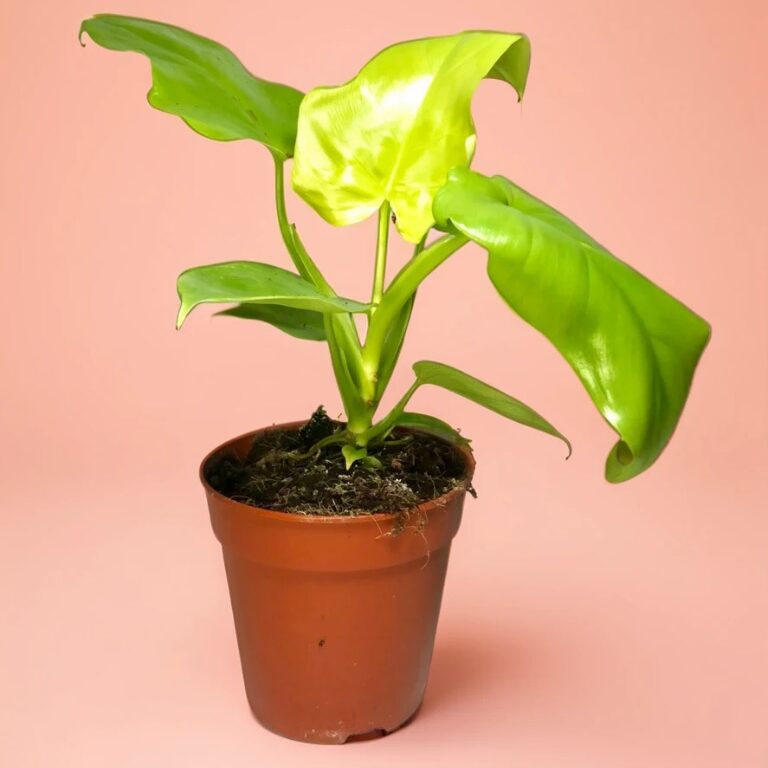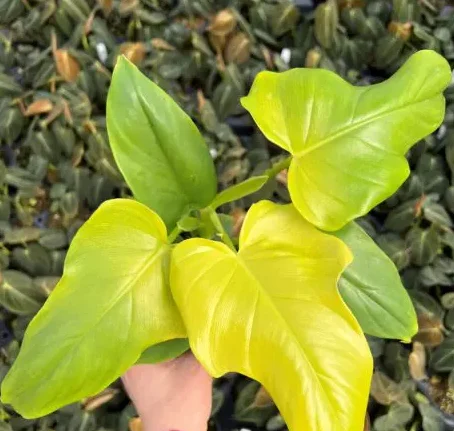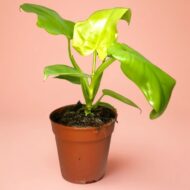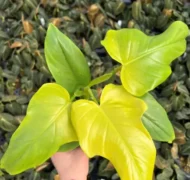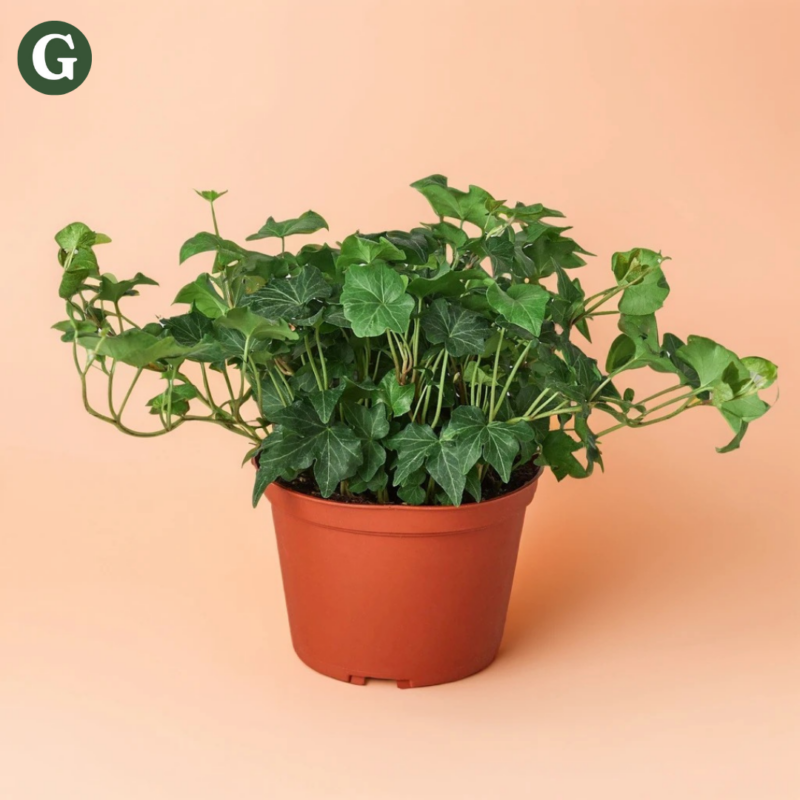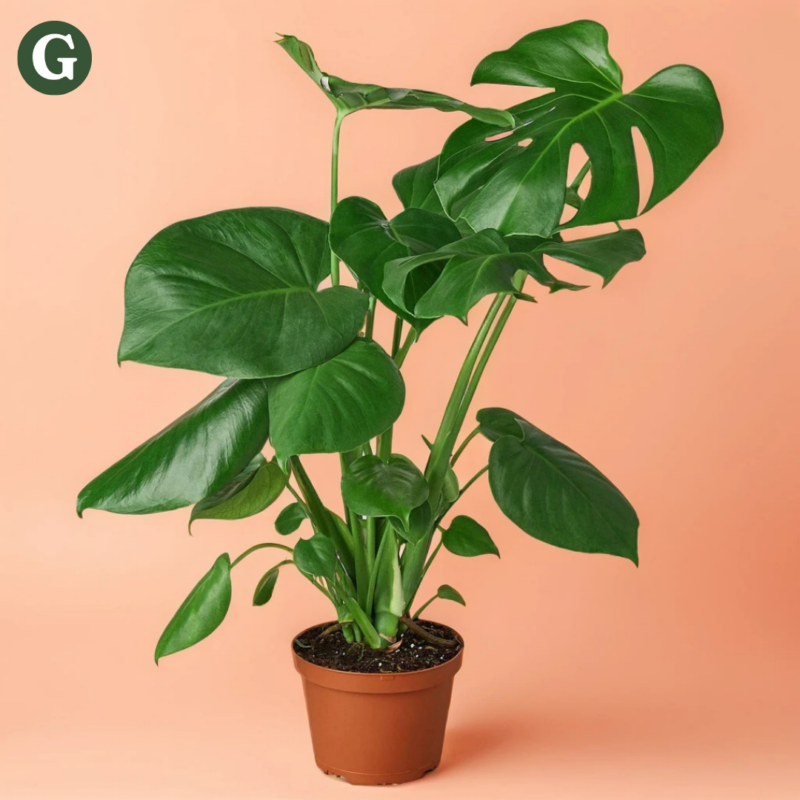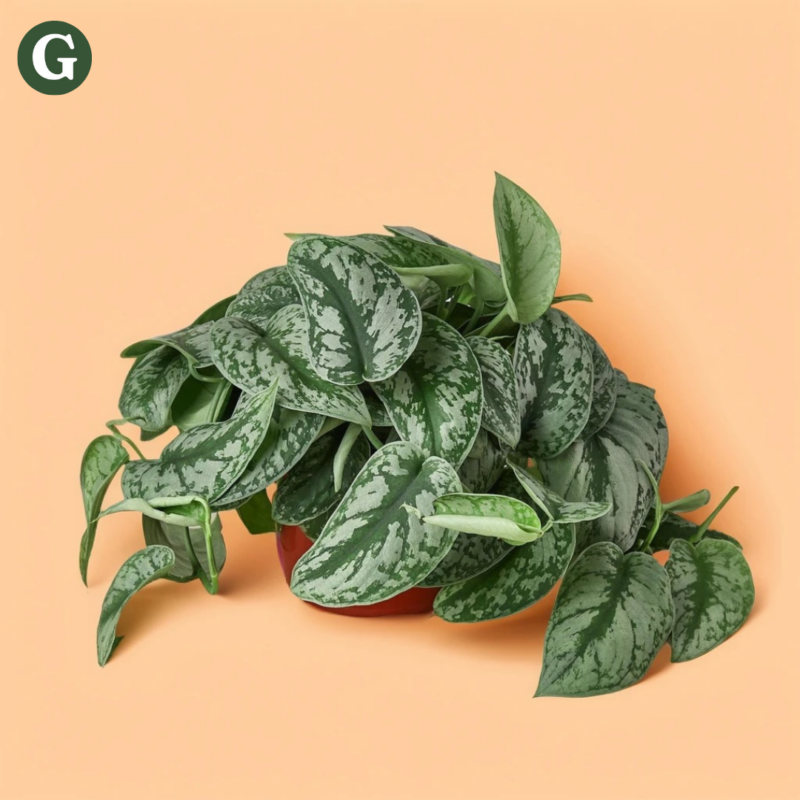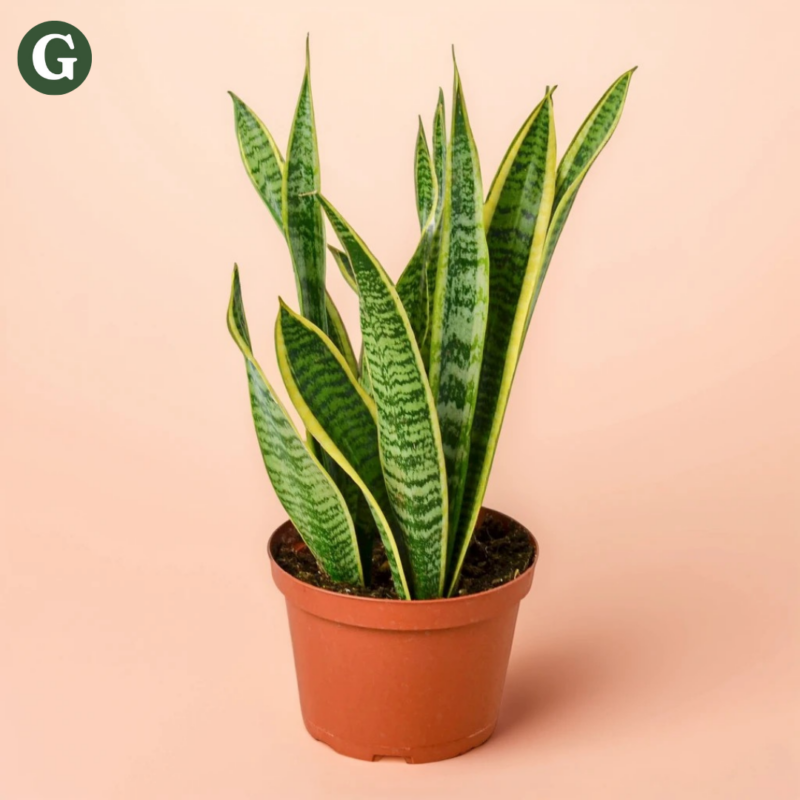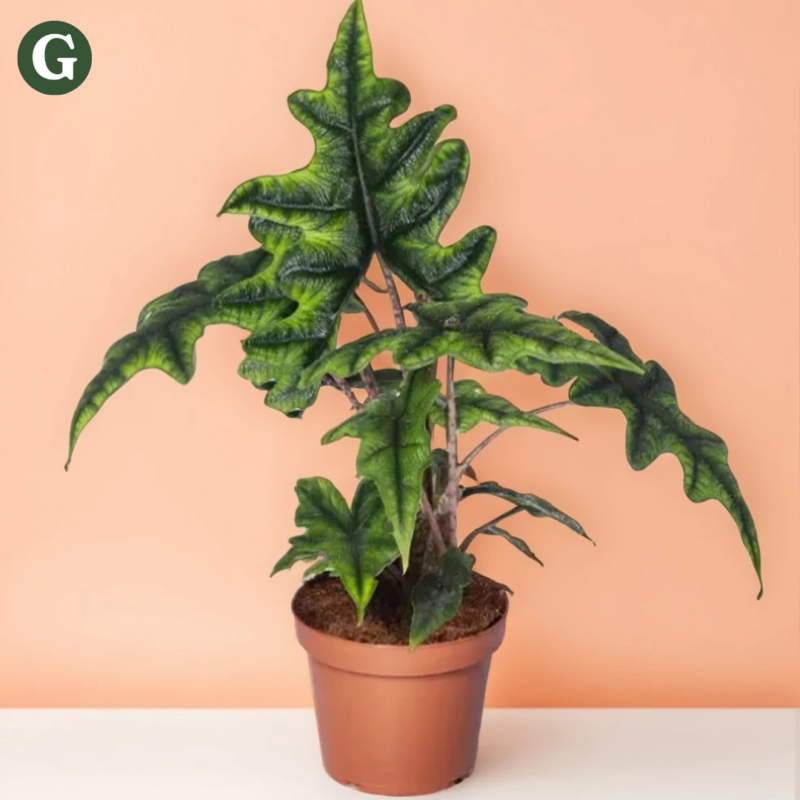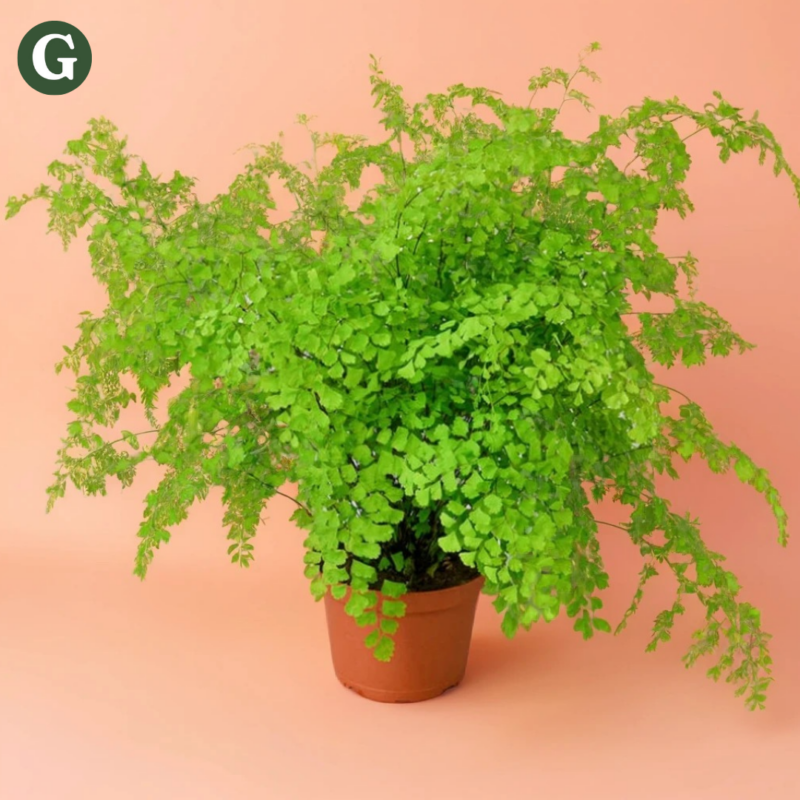Philodendron Golden Violin
Botanical Name: Philodendron bipennifolium Aurea
Common Name(s): Gold Violin Philodendron, Golden Violin Philodendron
The Philodendron Golden Violin is an eye-catching and distinctive variety of Philodendron, celebrated for its vibrant, golden-yellow leaves and elegant, violin-shaped foliage. This rare beauty native to the tropical regions of Central and South America. The plant’s striking golden leaves, which deepen as they mature, create a stunning visual contrast against its deep green stems, making it a standout in any indoor space. Its unique leaf shape, resembling a violin, adds a sculptural and dramatic flair to your home or garden.
This Philodendron thrives in bright, indirect light, where it can showcase its golden hues to their fullest potential. While it can tolerate lower light, the golden coloration may fade in such conditions. The Golden Violin prefers well-draining, slightly acidic soil and should be watered when the top 1-2 inches of soil feel dry to the touch. As with many tropical plants, it is sensitive to overwatering, so it's crucial to allow the soil to dry out slightly between waterings to avoid root rot. It does best in temperatures between 65–80°F (18–27°C) and benefits from higher humidity levels, making it ideal for bathrooms, kitchens, or areas where the humidity is naturally elevated.
Air Purifying Qualities:
- Toxin Removal: The Philodendron Golden Violin is effective at filtering out toxins such as formaldehyde and benzene, contributing to a healthier indoor environment.
- Oxygen Production: Like other Philodendron varieties, it absorbs carbon dioxide and releases oxygen, helping to purify the air in your home.
- Humidity Regulation: Through transpiration, this plant can slightly raise the humidity in its surroundings, which is especially helpful in drier indoor spaces.
Note: The Philodendron Golden Violin is toxic to pets, including cats and dogs, if ingested. Keep it out of reach of curious pets to avoid any health issues.
Care Insights & Expert Tips
- Fertilize regularly: Feed your plant with a balanced liquid fertilizer diluted to half strength every 4 weeks during the spring and summer season.
- Avoid Cold Drafts: This Philodendron prefers warm, consistent temperature. Avoid sudden reduced temperatures changes.
- Repotting: Repot every 1-2 years or when the plant becomes root-bound. Use a well-draining potting mix, such as peat-based or general houseplant mix, and select a pot that’s just 1-2 inches larger than the current one.
- Simplified Care Routine: This Philodendron is delicate and does not require overly complex care routines. Complications, such as overwatering and too much fertilizer, can affect the plant and stunt its growth.

Visit our plant care library
Find essential tips to keep your plants thriving, vibrant, and healthy.
